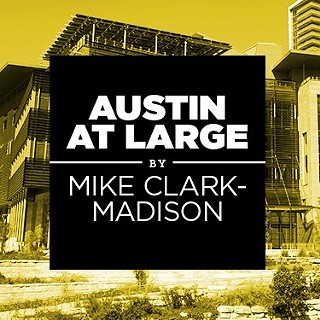Austin at Large: Mapping the Transition Zones
Ever so slowly, City Hall learns to govern without consensus
By Mike Clark-Madison, Fri., May 3, 2019
If you've been following Austin's effort to reform its broken and obsolete land use code – a project now in its seventh year – you've heard a lot about "transition zones." These are the in-between areas where higher-density centers and corridors are supposed to fade gently into the single-family fabric still found in even the most central of Austin neighborhoods.
As the city has rumbled and stumbled from the Imagine Austin comprehensive plan, through what used to be CodeNEXT, into whatever we're calling it now (CodeNEXT-ra?), this "transition" concept has been a big, tender, angst-filled pain point. Embedded within it is the notion that one side of the zone is fundamentally different from the other – one stronger and the other weaker, one more desirable and the other less so, one needing protection from the other. A new apartment building and an old house couldn't just sit comfortably side by side. Since the house was there first, this usually gets spun as the neighborhood's needing protection from the corridor density (noise! cars! flooding!). But as it's become clearer to Austinites that socioeconomic equity will only be possible with more new housing, the renters of the corridors can be seen as more vulnerable than, and thus needing protection from, the owners of the existing houses and the de facto segregation created by the entrenchment of the owners' interests.
More Than Just Lines on a Map
Since this whole saga has never really just been about urban planning, it's almost too easy to overinvest the "transition" concept with meaning. Suffice it to say that yes, Austin itself is a "transition zone," between a small city and a large one. We are now mapping that zone, not just in our code but in our politics – in both what we decide and how we decide. The small-city era of a consensus-driven at-large Council is over, but the big-city era of coalition-building between diverse communities of interest has yet to truly begin.
You can tell from watching City Hall in action the last few weeks that as a community, we're making a lot up as we go, with all the detours and frustrations that entails. But we're getting toward a place where we have greater clarity about what we're transitioning from, and what to.
When Mayor Steve Adler pronounced CodeNEXT dead last August, a leading cause of death was thought to be Council's failure to provide guidance to the project team about what a new code had to do. Inevitably, this requires value judgments and ownership of outcomes. In theory, those values and outcomes reside in Imagine Austin.
In practice, Imagine Austin is not a very rigorous city plan, in terms of telling city officials to do this and not do that, or to do this before doing that, or to spend finite dollars on this and not on that. Frankly, few Austin plans do contain such rigor, whatever their scale – from the lovingly crafted neighborhood plans all the way up to our big-statement citywide and regionwide plans for improving mobility, ending economic injustice, closing educational achievement gaps, or healing our parts of the planet.
The Courage of Our Commitments
For the 30-plus years I've lived here and probably longer, Austin has been queasy about making the hard choices such planning entails, lest someone be left feeling hurt or deprived. Some of this transpires in obvious bad faith that justifies a lot of cynicism about Austin politics. But this quirk of our civic personality does have its upside. When compared to other cities (especially in Texas), Austin really is less ensnared by a dismal deference to power and money that creates bad outcomes by default.
But it makes our attempts to achieve good outcomes only as strong as the commitment of the community leaders (elected and otherwise) who champion them. When that commitment isn't really that strong, Austin muddles through case by case, reacting to pressure and transacting stopgap solutions, which is how we got the existing land development code. No matter how deep our abiding faith in process and public engagement, they do not provide an alternative to leadership, and our problems do not solve themselves.
City Manager Spencer Cronk, perhaps without aiming to, has forced Council to lead as it should, show its commitment to the mild, eager-to-please urbanism of Imagine Austin, and own the outcomes we achieve via CodeNEXT-ra. Remember, Cronk was simply tasked with proposing a process to reboot the code-reform project that was supposed to be over when he got here.
He instead asked Adler and Council to go further and confirm that yes, they want a code that increases density, relaxes parking rules, and adjusts compatibility standards and housing types (i.e., "missing middle") to create "transition zones" that aren't just moats protecting one side from the other. Slowly, City Hall has found its way toward the courage of those commitments. It's taken a lot of trust-building and listening for listening's sake to get there, and we're still watching older Austin constituencies, used to having their viewpoints centered, learning how to lose and to accept no for an answer. But we're finally mapping the political transition zone that Austin has to navigate if it's going to live up to the promise of its plans.
Got something to say? The Chronicle welcomes opinion pieces on any topic from the community. Submit yours now at austinchronicle.com/opinion.







